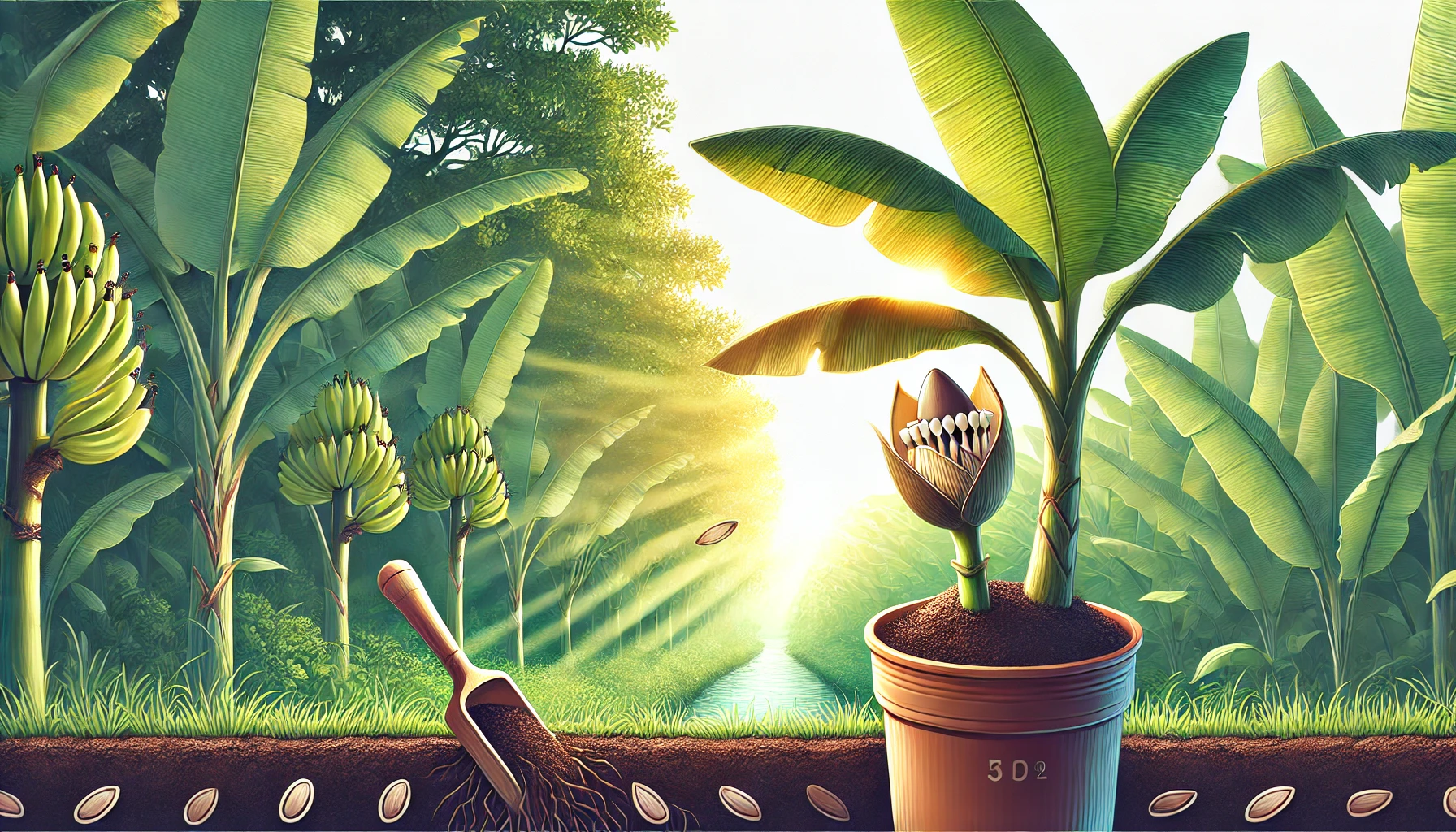Growing Banana Plants from Seed: A Complete Guide
Banana plants, belonging to the genus Musa, are renowned for their delicious fruit and lush foliage, making them a popular choice for home gardeners and tropical enthusiasts. With their exotic appearance and tropical flair, banana plants can thrive in a variety of climates, provided they receive proper care and attention. Growing banana plants from seed is a rewarding experience that allows you to witness the entire life cycle of this tropical beauty, from germination to fruiting.
Perfect Weather Conditions:
| Weather Condition | Description |
|---|---|
| Temperature | Consistent warmth, ideally between 75-85°F (24-29°C) |
| Humidity | High humidity levels, around 50-70% |
| Sunlight | Full to partial sun exposure |
| Rainfall | Regular, evenly distributed rainfall |
Choosing the Right Seed:
Selecting high-quality banana seeds is crucial for successful germination. When purchasing seeds, look for reputable suppliers known for their quality seeds. Alternatively, you can collect seeds from ripe bananas and preserve them by drying thoroughly before planting.
Growing Seedlings from Seed:
- Seed Preparation: Soak the seeds in warm water for 24 hours to soften the seed coat.
- Planting: Plant the seeds in a well-draining potting mix, burying them ½ inch deep.
- Moisture: Keep the soil consistently moist but not waterlogged.
- Temperature: Maintain a warm, humid environment, ideally using a propagation heat mat or placing the pot in a warm location.
- Germination: Germination typically occurs within 2-4 weeks, after which seedlings will emerge.
Nutrition Requirements:
Banana plants require various nutrients to thrive, including nitrogen, phosphorus, potassium, calcium, magnesium, and micronutrients. These nutrients support healthy growth, flower development, and fruit production.
| Nutrient | Function |
|---|---|
| Nitrogen | Stimulates leaf and stem growth |
| Phosphorus | Promotes root development and flower formation |
| Potassium | Enhances fruit quality and overall plant vigor |
| Calcium | Prevents disorders like tip burn and supports cell walls |
| Magnesium | Essential for chlorophyll production and enzyme activation |
| Micronutrients | Iron, zinc, manganese, and others aid in various metabolic processes |
Soil Mix for Banana Plants:
To create the perfect soil mix for banana plants, combine:
Soil Mix Ingredients for Banana Plants:
- Loamy Soil: 50%
- Compost: 20%
- Well-Rotted Manure: 10%
- Perlite or Sand: 10%
- Worm Castings: 5%
- Bone Meal: 5%
Mix the ingredients thoroughly to ensure even distribution of nutrients and good drainage.
Seedling Transfer:
When seedlings have grown to about 6 inches tall and have several leaves, transplant them into larger containers or directly into the garden or raised beds. Handle the seedlings carefully, ensuring not to damage the delicate roots.
When planting banana plants, spacing depends on the variety and the conditions of your growing area. Here are some general guidelines:
- Dwarf Varieties: If you’re growing dwarf banana varieties, they can typically be spaced around 5 to 7 feet apart. Dwarf varieties don’t grow as tall as traditional banana plants and have smaller root systems.
- Standard Varieties: For standard-sized banana plants, which can grow quite large, you’ll need more space. Aim for a spacing of around 10 to 12 feet between plants. This allows them enough room to spread out as they grow.
- Growing Conditions: Consider the conditions of your growing area. If you’re planting in an area with rich soil and plenty of sunlight, plants may grow larger and require more space. Conversely, if you’re planting in containers or in less fertile soil, you might be able to space them slightly closer together.
- Support Structure: Keep in mind that banana plants can benefit from a support structure, especially as they grow larger and produce fruit. Planting them too close together can make it difficult to provide adequate support for each plant.
- Air Circulation: Adequate spacing also promotes good air circulation around the plants, which can help prevent diseases and promote healthy growth.
- Companion Planting: Some gardeners also practice companion planting with bananas, planting them alongside other crops. In this case, spacing may be adjusted to accommodate the companion plants.
Ultimately, it’s a good idea to consult specific spacing recommendations provided by the nursery or supplier where you purchased your banana plants. They may have recommendations based on the specific variety you’re planting and the growing conditions in your area.
Stages of Growth:
- Seedling Stage:
- Water seedlings regularly, keeping the soil consistently moist but not waterlogged.
- Apply a balanced fertilizer every 4-6 weeks to promote healthy growth.
- Vegetative Stage:
- Provide ample sunlight, ideally 8-10 hours of direct sunlight per day.
- Fertilize every 4-6 weeks with a potassium-rich fertilizer to support leaf development.
- Flowering Stage:
- Reduce nitrogen fertilizer and increase potassium to encourage flower formation.
- Prune away old leaves to allow more energy to be directed towards fruit production.
- Fruiting Stage:
- Maintain consistent moisture levels, especially during fruit development.
- Support heavy fruit clusters with stakes or ties to prevent bending or breakage.
Harvesting and Preserving:
Harvest bananas when they reach full size and begin to develop a yellow color. Cut the entire fruit cluster from the plant, being careful not to damage neighboring fruits. Store harvested bananas in a cool, dry place away from direct sunlight to extend their shelf life. Alternatively, bananas can be frozen for long-term preservation or used fresh in a variety of culinary applications.



